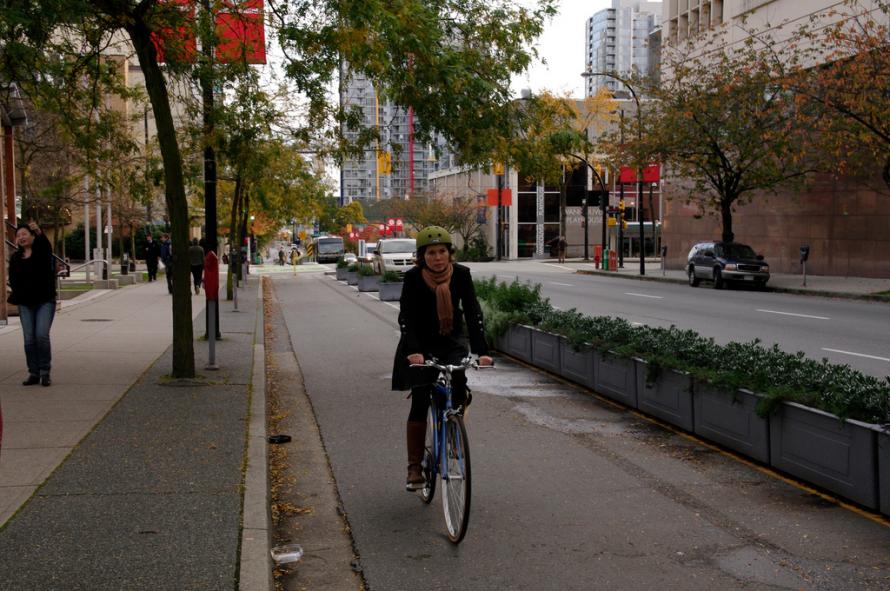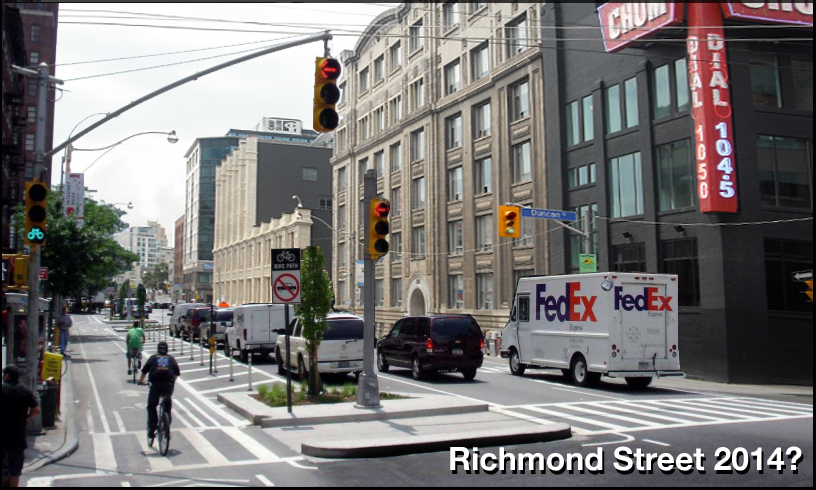[I'd like to introduce a new blogger to I Bike TO, Ian Slater. Ian is a father, husband and professor at York University. And as a guy on a bike, he'll be providing us with an interesting perspective of the long-distance commuter. Welcome Ian! -- Herb]
I was driving my son home from class one night on a poorly lit side street in Toronto when a cyclist, with no helmet, no lights, no reflectors and in dark clothing flew off the sidewalk and cut me off. I saw him at the last second and braked. He then pulled over to the side up ahead, adjusting something on his belt. I drove by, rolled down my window and told him, “I can’t see you brother, you’re completely invisible in the dark, I almost hit you.”, to which he replied:
“I can see you”, and rode off into the night.
My son asked me, “what did he mean by that?”
I spent quite a bit of time trying to figure out the answer to that question. What did he mean by that? Surely this guy is smart enough to realize that he is hard to see in the dark without any sort of lights and wearing light non-reflective clothing. And no helmet too, what does this tell me? Well, maybe he’s overconfident, that would explain his comment. Or perhaps he thinks that you are just as likely to run him over if he’s visible as when he’s not, so why bother?
The longer I listen to the public dialogue around cars and bikes in Toronto the more I favour the latter explanation. I think many cyclists are both overconfident and convinced that motorists would just as soon run them over as pass them by. I have seen many, many verbal fights break out between cyclists and motorists as I commute. They are rarely pretty. It’s all “war on the bike” and “war on the car”, I want a better model, war is ugly and, to be frank, if we’re at war the bikes are going to lose.
The level of mutual animosity in all this finally pushed me to start blogging. I think it’s time to dive in to the public dialogue.
Toronto occupies a very interesting position, a large metropolitan center with an international population, a strained transit system and an increasing number of cyclists. Or so it seems from what I see on the roads. Toronto has been cited as having the worst commute times from a sample of international cities, 80 min a day (that includes to and from work).
The TTC is strained and expanding, the city is growing. Air quality is impacted by an increased number of cars, I breathe the difference every time I ride. I see the wistful look on motorist’s faces when I wheel by them in a traffic jam.
We are ripe for a cycling revolution, but the mutual animosity makes this difficult.
I’ll be posting here regularly, giving my thoughts on current issues around cycling in TO, and hopefully pointing out some useful information for those who are thinking of long distance urban cycle commuting. What works for the short hop rider doesn’t necessarily work for everyone.
I hope I can bring a fresh perspective on things, and possibly get a few people who have been thinking about cycling to give it a go. The weather right now is fantastic for riding, cool and sunny, and everything is in full bloom, giving almost every street in the city a roiling green canopy, there’s never been a better time to be on something moving at a speed that allows you to see what’s all around you. The fresh air on your face, the ability to pass bumper to bumper traffic.
You know you want it.
I have also been taking pictures of Toronto cycling routes for 5 years or so, all on my phone camera and while moving. I’ll post a pic here regularly too, maybe it will inspire you to try out a new trail, with all the focus on bike lanes, we forget that Toronto has a wealth of urban cycling trails.
The pic at the top is from Humber Woods Park in North West Toronto.
Cheers,
Ian



